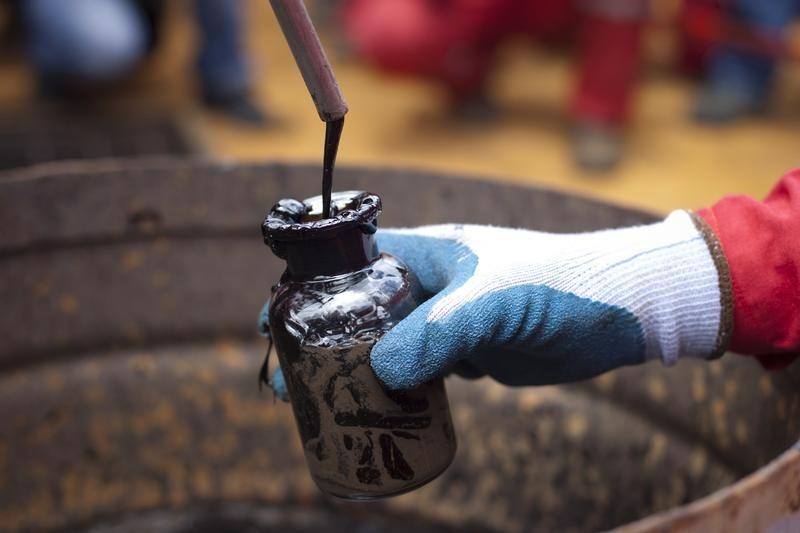Investing.com - Oil prices swung between gains and losses in North American trade on Thursday, as a broadly weaker U.S. dollar boosted the appeal of dollar-denominated commodities, while market players continued to focus on a global supply glut.
The prospect of less U.S. interest rate hikes this year drove the dollar down against its major rivals. The dollar index, which measures the greenback’s strength against a trade-weighted basket of six major currencies, slumped to 94.41 on Thursday, a level not seen since October. It last stood at 94.43.
Oil prices typically strengthen when the U.S. currency weakens as the dollar-priced commodity becomes cheaper for holders of other currencies.
Crude oil for May delivery on the New York Mercantile Exchange fell by as much as 1.9% to a session low of $37.57 a barrel, a level not seen since March 16, before recovering to $38.38 by 13:40GMT, or 9:40AM ET, up 6 cents, or 0.16%.
A day earlier, Nymex oil rallied to $39.85 before paring gains to close at $38.32, in the wake of disappointing supply data.
The U.S. Energy Information Administration said in its weekly report that crude oil inventories rose by 2.3 million barrels last week to an all-time high of 534.8 million barrels, underlining concerns over a domestic supply glut.
Since falling to 13-year lows at $26.05 on February 11, U.S. crude futures have rebounded by approximately 45% as a decline in U.S. shale production boosted sentiment. However, analysts warned that market conditions remained weak due to an ongoing glut.
Elsewhere, on the ICE Futures Exchange in London, Brent oil for June delivery tacked on 19 cents, or 0.47%, to trade at $40.24 a barrel after falling to an intraday low of $39.50.
On Wednesday, London-traded Brent futures jumped to $41.35 before giving back some gains to end at $40.05, as a report showed that OPEC output increased in March.
OPEC March production rose by 100,000 barrels per day, led by both Iraq and Iran, according to a Reuters survey.
Brent futures are up by roughly 45%, since briefly dropping below $30 a barrel on February 11. Short-covering began in mid-February after Saudi Arabia and fellow OPEC members Qatar and Venezuela agreed with non-OPEC member Russia to freeze output at January levels, provided other oil exporters joined in.
OPEC member Iran is expected to attend an oil producers meeting in Doha on April 17 to discuss an output freeze, although it may not necessarily partake in negotiations.
Meanwhile, Brent's premium to the WTI crude contract stood at $1.86 a barrel, compared to a gap of $1.73 by close of trade on Wednesday.
